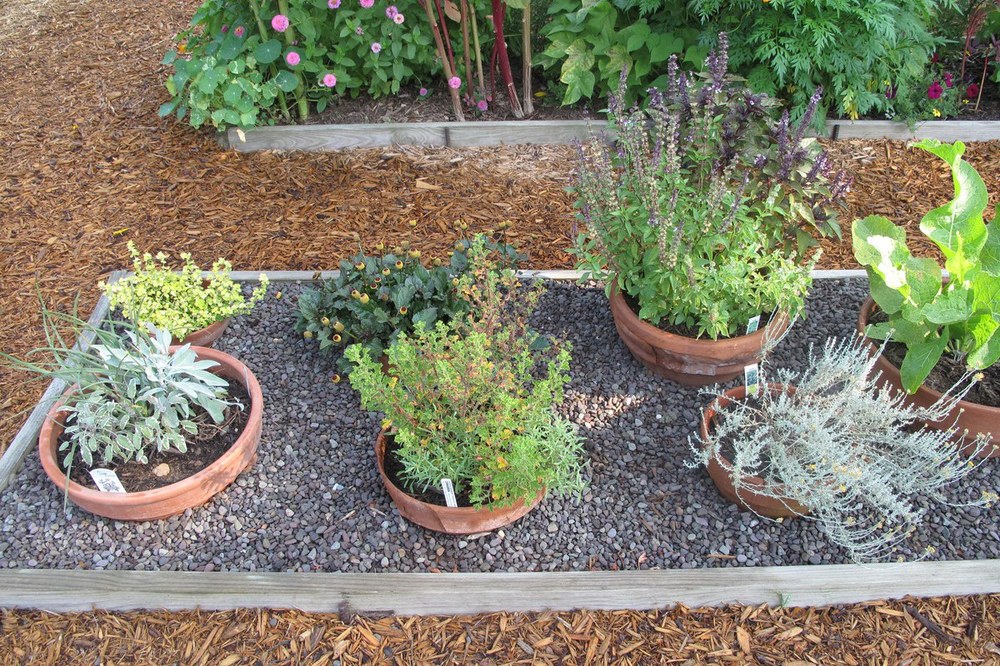Raised beds are a convenient way to produce homegrown vegetables.

Part of the Raised Bed Garden
A raised bed can be a great way to start gardening on a small scale. Heights, depths and widths of beds vary and they can be made of new wood, metal or found (recycled) materials. Our beds have wooden frames. You can use concrete blocks, straw bales, or no frames at all and just raise the soil. Most vegetable plants need at least six inches of soil and full sun (6-8 hours daily).
A higher raised bed can make planting, maintenance and harvest easier by reducing the amount of bending needed. Gardeners also may choose to construct a raised bed on top of soils that have lots of stone or clay or in situations where there the soil might have contaminants.
A raised bed can be any size (4'x4' is a good beginning). You should be able to work in it without stepping in it. The beauty of raised beds is that you never walk in them; and, as a result, the soil does not become compacted. Permanent mulch on the soil like grass clippings, dried leaves, or other organic mulch will help reduce moisture loss.
Because raised beds warm up earlier in spring, you can plant earlier. They can be used as cold frames to begin seedlings in a protected environment. Fill it with a mix of good garden soil and compost, and you can begin.
Here are first steps for planning a vegetable garden.
Plant recommendations and space saving techniques.
Succession planting extends the vegetable harvest.
How to prepare a 5-gallon bucket for planting.
Learn how to calculate the right amount of seed to plant based on the size of your garden.

